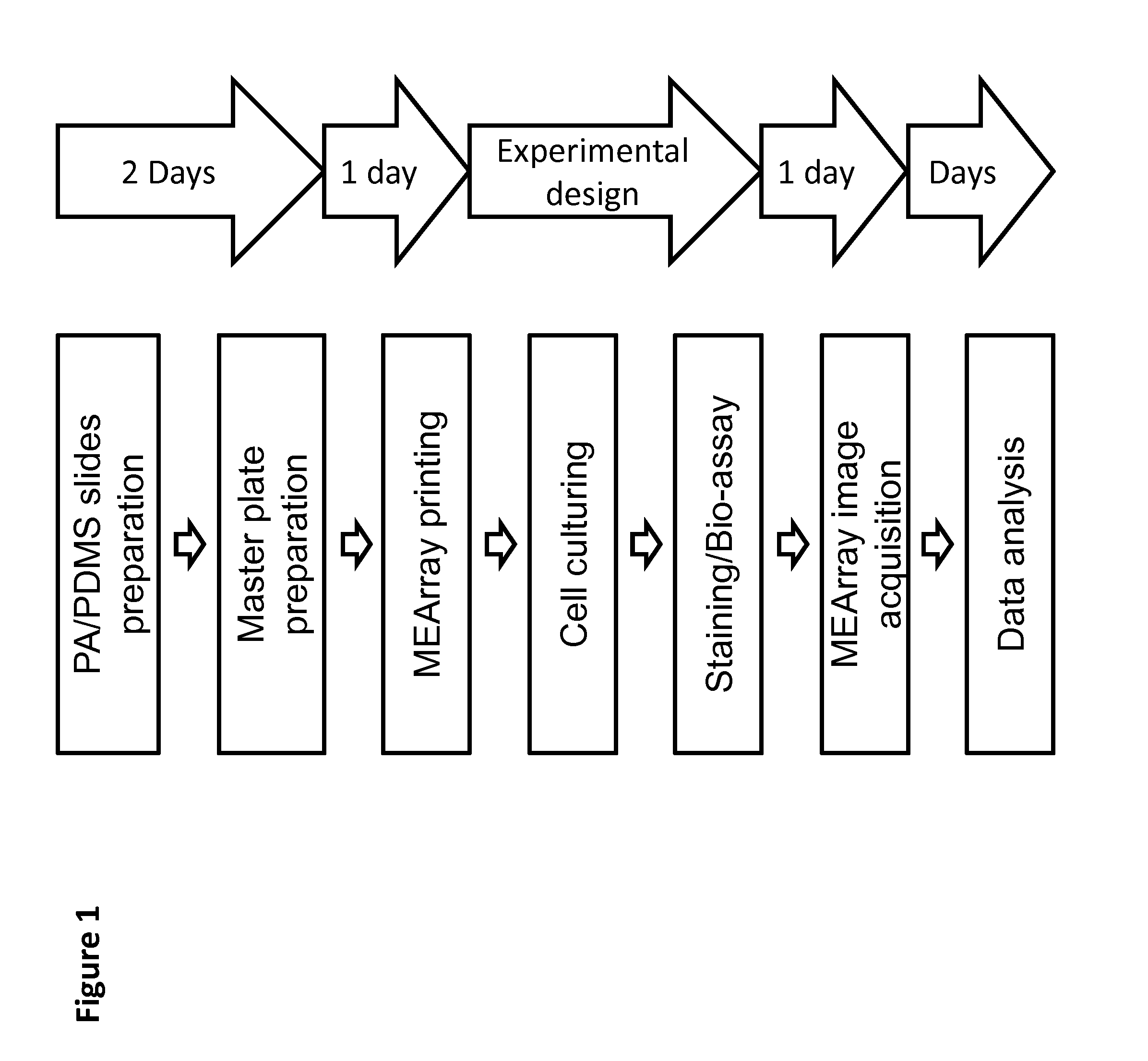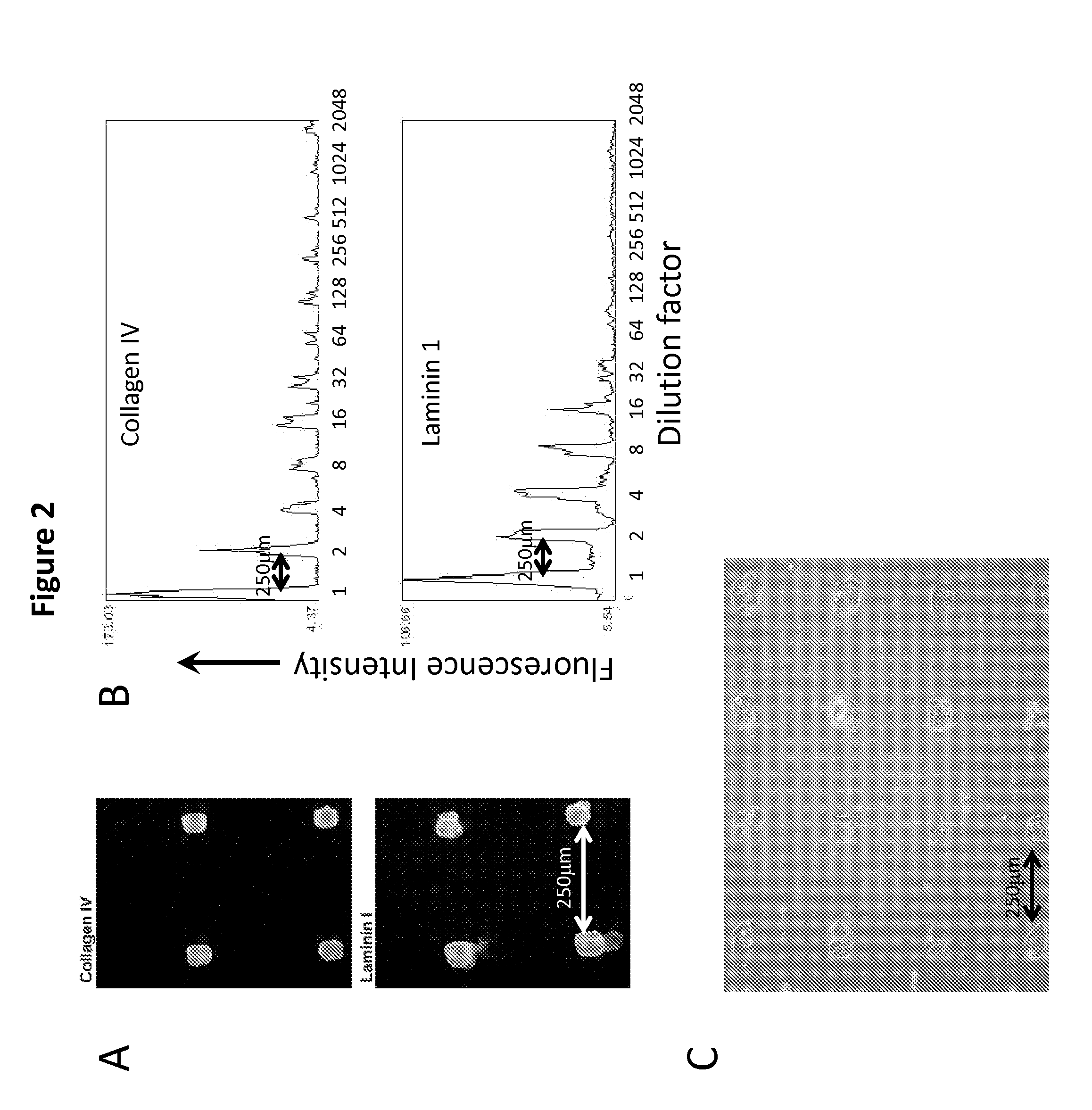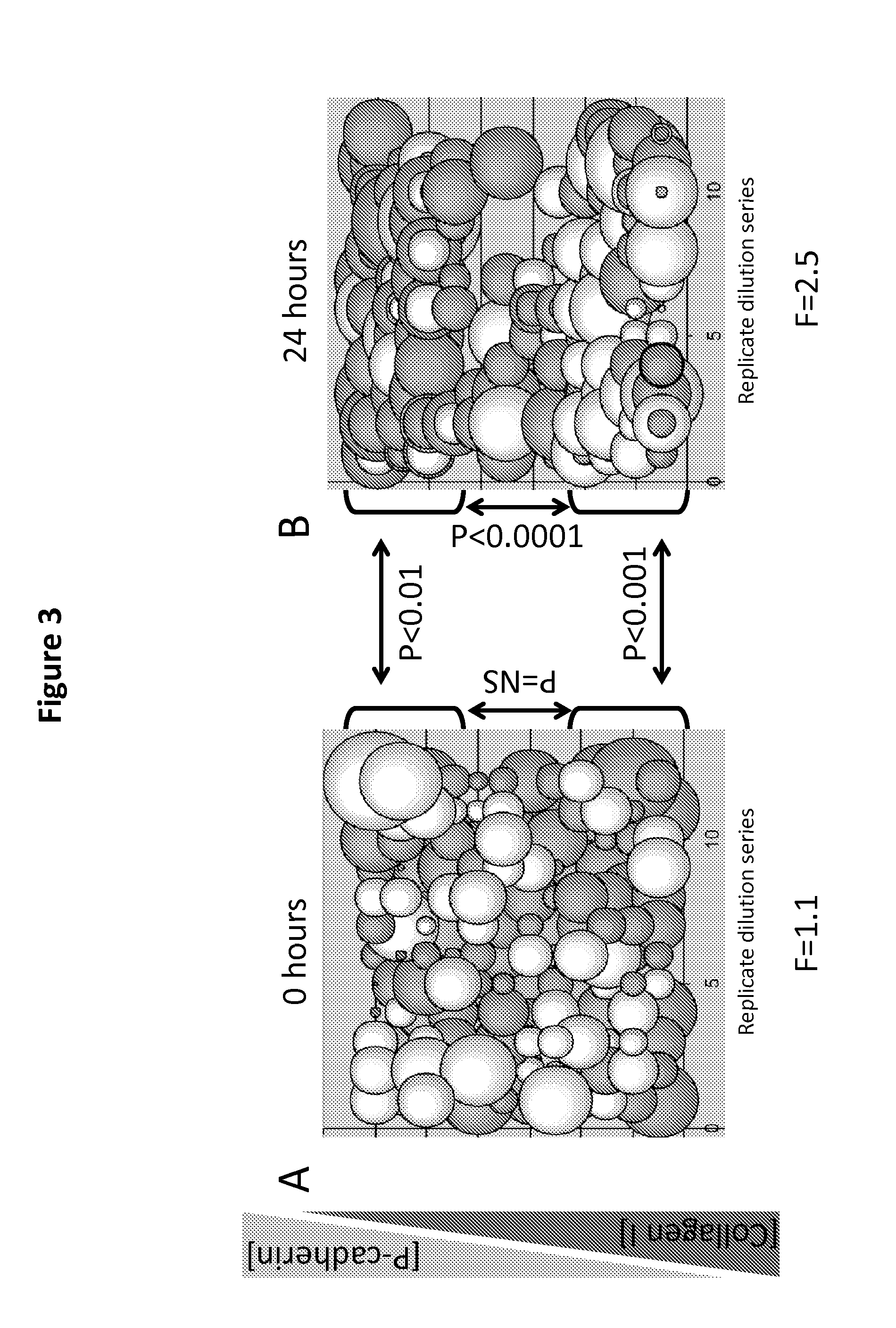Elastic Modulus-modified MicroEnvironment microArrays (eMEArrays) and Uses Thereof
- Summary
- Abstract
- Description
- Claims
- Application Information
AI Technical Summary
Benefits of technology
Problems solved by technology
Method used
Image
Examples
example 1
Preparation of eMEArrays
1.) Printing Substrata Preparation
[0049]The decision to use polydimethylsiloxane (PDMS)-coated or polyacrylamide (PA)-coated slides depends on the important parameters of the experimental design. The elastic modulus of both polymers can be tuned to mimic the stiffnesses of different tissues by altering the base / cure ratio of PDMS, and the acrylamide / bis-acrylamide ratio of PA. PDMS can mimic stiffer tissues in the range of 1-10 MPa (e.g. cartilage, cornea, and arterial walls), and PA can mimic softer tissues in the range of 100 Pa-100 kPa (e.g. breast, brain, liver, and prostate). See Kim, H. N. et al. Patterning Methods for Polymers in Cell and Tissue Engineering. Annals of biomedical engineering, doi:10.1007 / s10439-012-0510-y (2012) hereby incorporated by reference. PDMS is inexpensive, easy to prepare, and the geometry of the printed features will be identical to the head of the printing pins. Thus the size and shape of the features can be precisely contro...
example 2
Using MEArrays for Contextual Functional Screening of Drug-Cell Interactions
[0086]Whether developing anti-cancer drugs, improving clinical treatment regimens, or studying human cancer cells, it is important that we are able to manifest the impact of the tissue microenvironment (ME). In this Example, we describe the MEArray platform for the application of determining the functional (e.g. apoptosis, proliferation, differentiation) impact of different tissue-mimetic MEs on drug-cell interactions. We will compare tumor cell drug responses across numerous related ME conditions (differing iteratively by one component). We will develop a representation of how each ME component, and the physical properties of elasticity and shape, work together to elicit specific functional outcomes. Standard-of-care chemotherapeutics and agents that target a specific oncogenic driver (e.g., Her2) will be employed. Context-dependent changes in the antiproliferative effects (IC50 shift) on sensitive cancer c...
example 3
The Elastic Modulus of Cell Culture Dishes and Gels and the Molecular Composition of the Microenvironment Alter Therapeutic Responses
[0096]Recent work showed that HER2-targeted therapeutic response is different in breast cancer cell lines in 2D and 3D culture microenvironments and described in Justin R. Tse, Adam J. Engler et al. Current Protocols in Cell Biology (2010), hereby incorporated by reference. Therefore, we wanted to quantify what contributions, if any, physical and molecular properties of the microenvironment made to the effect of therapeutics on cells. Utilizing bioengineered culture substrata and combinatorial biology we can dissect the role played by microenvironment in drug response, and identify key points of intervention for future combination therapeutic approaches.
[0097]Based on our previous years experience with polyacrylamide (PA) based MEArrays we fabricated MEArrays with 160 unique microenvironments meant to represent ECM and growth factor compositions at a v...
PUM
 Login to View More
Login to View More Abstract
Description
Claims
Application Information
 Login to View More
Login to View More - R&D
- Intellectual Property
- Life Sciences
- Materials
- Tech Scout
- Unparalleled Data Quality
- Higher Quality Content
- 60% Fewer Hallucinations
Browse by: Latest US Patents, China's latest patents, Technical Efficacy Thesaurus, Application Domain, Technology Topic, Popular Technical Reports.
© 2025 PatSnap. All rights reserved.Legal|Privacy policy|Modern Slavery Act Transparency Statement|Sitemap|About US| Contact US: help@patsnap.com



